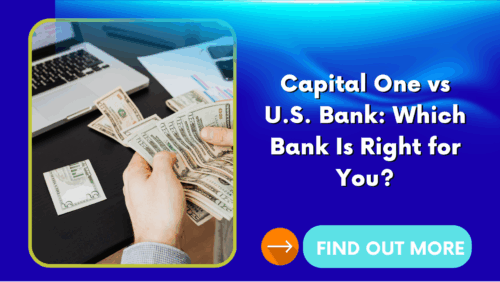Anuncios
Cuando se trata de pedir dinero prestado, una de las decisiones más importantes a las que se enfrentará es elegir entre un asegurado y un sin garantía préstamo.
Ambas opciones pueden proporcionarle acceso a los fondos que necesita, pero funcionan de forma muy diferente.
Los préstamos garantizados requieren una garantía, mientras que los no garantizados se basan principalmente en su solvencia.
Comprender las diferencias puede ayudarle a tomar una decisión informada que proteja su futuro financiero.
En esta guía se comparan en detalle los préstamos garantizados y los no garantizados, con sus definiciones, ventajas, riesgos y mejores casos de uso, para que pueda determinar qué opción es la más adecuada para usted.
Anuncios
1) ¿Qué es un préstamo garantizado?
Un préstamo garantizado está respaldado por una garantía, lo que significa que usted pignora un activo que el prestamista puede reclamar en caso de impago.
Tipos comunes: Hipotecas (garantizadas por su vivienda), préstamos para automóviles (garantizados por su coche) y préstamos con garantía hipotecaria.
Ejemplos colaterales: Bienes, vehículos, cuentas de ahorro u otros activos de valor.
Por qué les gustan a los prestamistas: Las garantías reducen el riesgo, lo que a menudo se traduce en mejores condiciones de préstamo.
En esencia, los préstamos garantizados son un trueque: tipos más bajos a cambio de ofrecer algo de valor como garantía.
2 ¿Qué es un préstamo sin garantía?
Los préstamos sin garantía no requieren aval. En su lugar, la aprobación depende de su puntuación de crédito, sus ingresos y su historial financiero general.
Tipos comunes: Préstamos personales, tarjetas de crédito y préstamos estudiantiles.
Factores de admisibilidad: Crédito sólido, ingresos estables y bajo coeficiente de endeudamiento.
Por qué gustan a los prestatarios: Sin riesgo de perder su patrimonio personal en caso de impago.
Aunque los préstamos sin garantía son más accesibles en términos de activos, suelen conllevar tipos de interés más elevados.
3. Resumen de las principales diferencias
He aquí una rápida comparación:
Colateral: Obligatorio para los garantizados, no para los no garantizados.
Tipos de interés: Suele ser inferior en el caso de los préstamos garantizados.
Factores de aprobación: Los préstamos garantizados dependen del valor de los activos; los no garantizados, del crédito.
Importes de los préstamos: Los préstamos garantizados suelen ofrecer importes más elevados.
Riesgo: El impago de préstamos garantizados puede costarle su patrimonio; los impagos no garantizados dañan el crédito pero no embargan bienes.
Este contraste es la base para elegir el tipo de préstamo adecuado.
4. Ventajas de los préstamos garantizados
Los préstamos garantizados pueden ser muy beneficiosos para determinados prestatarios.
Tipos de interés más bajos: Al reducirse el riesgo del prestamista, usted disfruta de mejores tipos de interés.
Préstamos de mayor cuantía: Las garantías le permiten obtener más préstamos que las alternativas no garantizadas.
Plazos de amortización más largos: A menudo se prolonga durante años, lo que hace que los pagos mensuales sean menores.
Aprobación más fácil: Incluso los prestatarios con un crédito menos que perfecto pueden optar a la ayuda.
Estas ventajas hacen que los préstamos garantizados resulten atractivos para grandes gastos, como la compra de una casa o un coche.
5. Desventajas de los préstamos garantizados
Por supuesto, los préstamos garantizados tienen sus contrapartidas.
Riesgo de pérdida de activos: Si incumple, el prestamista puede embargar su casa, coche u otra garantía.
Aprobación más lenta: Evaluar las garantías puede llevar tiempo.
Menos flexibilidad: Los fondos suelen estar vinculados a fines específicos, como la compra de una propiedad o un vehículo.
Lo que está en juego es más importante, por lo que es crucial pedir préstamos de forma responsable.
6. Ventajas de los préstamos sin garantía
Los préstamos sin garantía también ofrecen ventajas convincentes.
No se requieren garantías: No se arriesga a perder bienes personales.
Aprobación más rápida: Las decisiones suelen tomarse en cuestión de horas o días.
Uso flexible: Los fondos pueden utilizarse para casi cualquier cosa, desde consolidar deudas hasta financiar acontecimientos vitales.
Bueno para prestatarios de crédito fuerte: Las personas con un crédito excelente también pueden acceder a tipos favorables.
Los préstamos sin garantía ofrecen tranquilidad si no quiere arriesgar su patrimonio.
7. Desventajas de los préstamos sin garantía
Sin embargo, los préstamos sin garantía no están exentos de inconvenientes.
Tipos de interés más altos: Los prestamistas asumen más riesgo, por lo que los tipos suelen ser más altos.
Límites de préstamo más bajos: Es posible que no pueda optar a tanto como con los préstamos garantizados.
Requisitos estrictos: La aprobación suele exigir un crédito bueno o excelente.
Plazos de amortización más cortos: Los pagos pueden ser más elevados debido a los plazos más cortos.
Estos factores hacen que los préstamos sin garantía sean menos idóneos para financiaciones cuantiosas y a largo plazo.
8. ¿Qué tipo de préstamo le conviene?
La decisión entre préstamos con o sin garantía depende de sus circunstancias.
Elige un préstamo garantizado si:
Necesitas un préstamo importante (como una hipoteca o un préstamo para comprar un coche).
Tiene activos valiosos que puede utilizar como garantía.
Quieres el tipo de interés más bajo posible.
Elige un préstamo sin garantía si:
Carece de garantías o no quiere arriesgar su patrimonio personal.
Necesita dinero rápidamente para fines flexibles.
Tiene un crédito sólido y puede optar a tipos decentes.
Comprender sus objetivos y su tolerancia al riesgo es fundamental.
9. Consejos para elegir bien
Independientemente del tipo de préstamo que considere, siga estas buenas prácticas:
Compara ofertas: Compare precios y condiciones.
Lee la letra pequeña: Entender las comisiones, las penalizaciones y los plazos de amortización.
Pida prestado de forma responsable: Sólo contraiga deudas que pueda devolver de forma realista.
Piensa en tu futuro: Piensa en cómo afecta el préstamo a la estabilidad financiera a largo plazo.
Tomar una decisión informada garantiza que su préstamo se convierta en una herramienta de crecimiento, no en una carga.
Conclusión
Tanto los préstamos garantizados como los no garantizados desempeñan un papel importante en las finanzas personales, pero responden a necesidades diferentes.
Los préstamos garantizados son ideales para grandes importes y tipos de interés más bajos, pero conllevan el riesgo de perder la garantía.
Los préstamos sin garantía ofrecen flexibilidad y tranquilidad, pero a menudo con costes más elevados y requisitos más estrictos.
Sopesando los pros y los contras, alineando su elección con sus objetivos financieros y pidiendo prestado de forma responsable, puede seleccionar el tipo de préstamo que mejor respalde su futuro.
Ya sea garantizado o no garantizado, el préstamo adecuado no es sólo cuestión de dinero, sino de crear estabilidad financiera y oportunidades.
Fuente de información: www.wellsfargo.com/mobile-online-banking/


